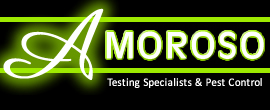 When obtaining a mortgage or a mortgage guarantee to finance the purchase of a home in Connecticut, you most likely will be required to obtain a pest or termite inspection by the bank, the mortgage company, or the guarantor (FHA, VA, HUD, etc.)
When obtaining a mortgage or a mortgage guarantee to finance the purchase of a home in Connecticut, you most likely will be required to obtain a pest or termite inspection by the bank, the mortgage company, or the guarantor (FHA, VA, HUD, etc.)
Although commonly referred to as a “termite inspection,” WDO stands for “wood-destroying organisms,” and a proper WDO inspection looks for evidence of infestation by termites (both subterranean and drywood types), wood decay, wood-devouring beetles, carpenter ants, carpenter bees as well as evidence of past infestations, damage to wood, or conditions conducive to infestations, and evidence of past pest treatments.
The importance of getting a good pest inspection:
First off, when you are buying a home in CT, the pest inspector is working for you – not the real estate agent, not the lender and not the seller. You are the one who is paying for the inspection.
Understand that a proper WDO or termite inspection costs money. Licensed pest inspectors and companies spend thousands of dollars a year on continuing training, certifications, inspection equipment, and insurance in order to provide you with the best inspection possible. So be very suspicious of companies offering cut-rate or “quickie” inspections. As with anything else, you generally get what you pay for.
A proper termite or pest inspection consists of several steps, which may not necessarily occur in this order:
An inspection of the exterior of the home, looking for signs of termite activity as well as conditions conducive to termite and other wood destroying insect infestations (such as wood that is too close to the ground, dead tree stumps by the house, improper grading, leaky gutters or downspouts, or tree branches overhanging or touching the home). The inspector will also look for evidence of infestation by other wood-destroying insects.
An inspection of the interior of the home, with special emphasis on the basement, garage, door and window frames areas that are particularly prone to wood boring pest infestation. This part of the inspection will be both visual and physical, and typically involves visually inspecting, tapping, probing, and susceptible wood.
The termite inspector will also be looking for live termites or other insects, dead termite “swarmers,” other evidence of infestation (tubing, frass, signs of prior treatments, etc), damaged wood, and conditions conducive to infestation (such as excessive moisture levels).
A detailed written summary of the pest inspection results includes a standardized inspection form developed by the NPMA and adopted by various state and federal agencies, and may sometimes include additional documents attached by the pest inspector to clarify the inspection findings. In CT the NPMA 33 form is the one that us typically required by most mortgage lenders.


